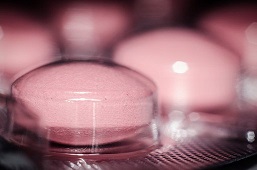What are the Symptoms of Gonorrhea in the Advanced Period?
Date:2024-10-11 click:0
Gonorrhea is a common sexually transmitted infection (STI) affecting millions globally. In the United States alone, there are approximately 25 million cases reported annually. One of the major challenges with gonorrhea is that its symptoms are often subtle in the early stages, allowing the infection to progress rapidly if not detected and treated promptly.
As the disease advances, the complications become more severe, leading to long-term health issues if left untreated. Understanding the symptoms of gonorrhea in its advanced stages is crucial for seeking timely medical intervention.


How to judge whether the condition is in the advanced period is not determined by the onset time of the patient, but by the symptoms. So what are the symptoms of gonorrhea in the advanced period?
1. Non-genital papilloma
It is mainly caused by direct or indirect contact with pollutants, which may cause papilloma of the conjunctiva and oral mucosa.
2. Ulcer and bleeding
With the development of the pathological part, it can affect other parts of the genitals, such as foreign bodies and discomfort in the genital part. Due to the location of the disease in the prepuce, urethra, perianal, and so on, these parts are susceptible to microbial infection, leading to ulcer, suppuration, bleeding, pain, and swelling of the lesion.

3. Canceration
As the most serious complication of the disease, once infected and cannot be treated in time, it is likely to lead to penis cancer and other malignant tumors. Early and thorough treatment is the most effective way to prevent the canceration of gonorrhea.
4. Back pain
Patients in the late stage of gonorrhea will have symptoms such as low back pain, perineum distention, frequent nocturnal spermatorrhea, and hemospermia.
5. Hematuria
In the advanced period of gonorrhea, mild urodynia may appear. When urinating, only the urethra is burned or slightly pricked, and terminal hematuria is often seen. Urine is generally clear, but gonococcus can be seen floating in it.

6. Urethral symptoms
In the late stage of gonorrhea, male patients will be complicated with urethritis, periurethral tissue inflammation, and abscess, deferentitis, seminal vesiculitis, epididymitis, orchitis, hydrocele of tunica vaginitis, prostatitis, balanitis of prepuce, gonococcal ulcer, etc.
7. Other complications
If the treatment of gonorrhea is not timely, pain, swelling, tenderness, and fever of epididymis often occur suddenly. In addition, the symptoms of gonorrhea may include hyposexuality, erectile dysfunction, sexual impotence, premature ejaculation, and neurasthenia. If there is epididymitis on both sides, it often causes the epididymis tube and the vas deferens occlusion, leading to infertility.
Advanced gonorrhea is mainly caused by the lack of treatment or incomplete treatment in the early stage of gonorrhea. If the patients get regular treatment in the first stage of gonorrhea, the cure rate can reach 97%; even if they get treatment in the second stage of gonorrhea, the cure rate is still 90%.

It can be seen that the earlier gonorrhea is treated, the better the effect will be. Irregular treatment can promote the recurrence of gonorrhea, but also make advanced gonorrhea occur in advance, resulting in severe consequences, but also
increase the chance of infection to the surrounding people.
Patients can try Chinese medicine Diuretic and Anti-inflammatory Pill. It has the effect of diuresis and detoxification, anti-inflammatory, and blood activating. It is made up of more than 50 natural herbs on the basis of ancient prescription, so it is not easy to produce drug resistance and has no side effects.

Moreover, it can kill bacteria and viruses, including Neisseria gonorrhoeae. It has a significant effect on gonorrhea for men and women, and can effectively treat the complications caused by gonorrheas, such as epididymitis, prostatitis, urethritis, urinary tract infection, and other urinary system diseases. Best wishes for your recovery!



